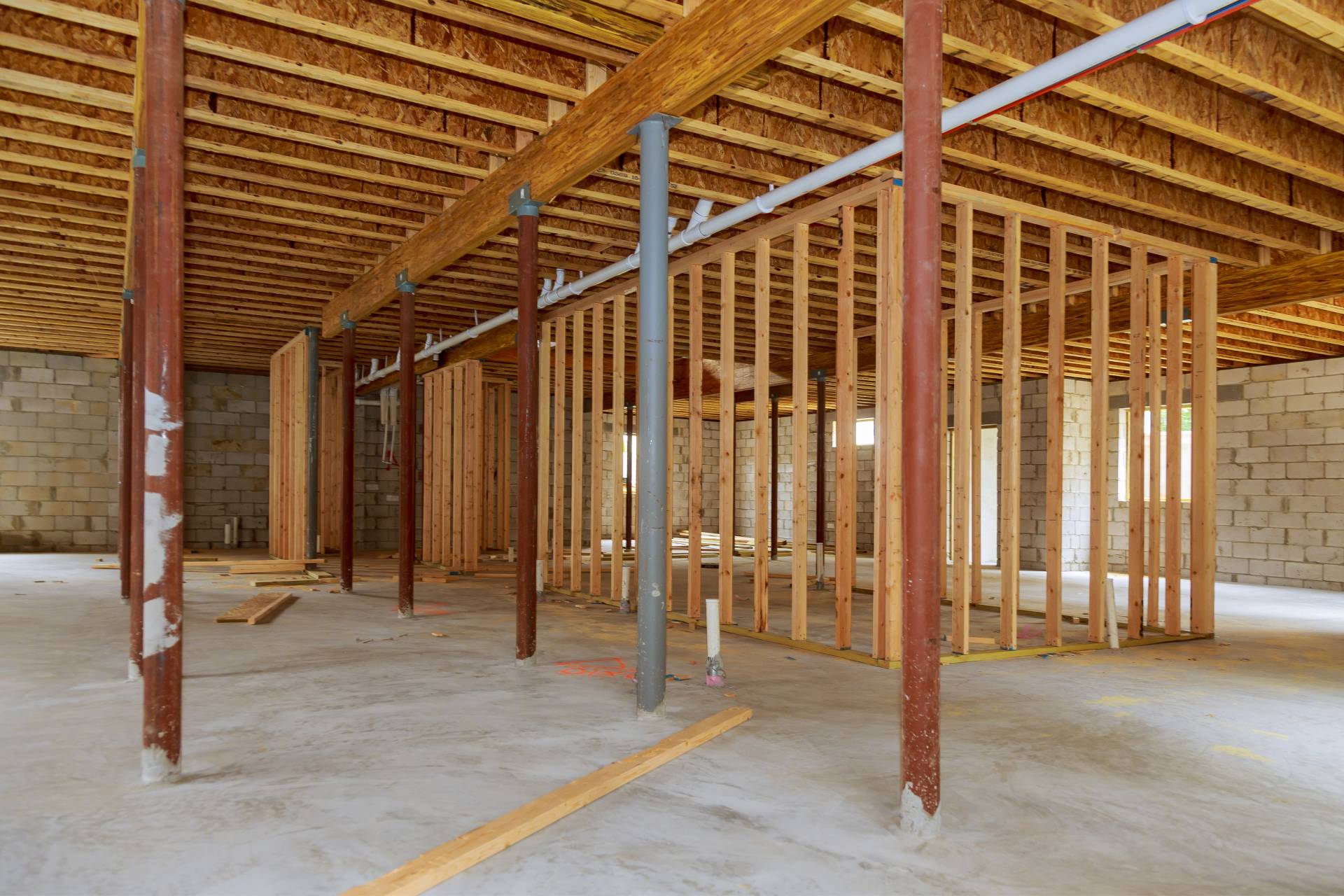Underpinning reinforces the foundation, making the structure more stable and resilient against potential damage from factors such as soil movement, ground water pressure, and seismic activity. Basement underpinning can be a proactive approach to maintaining the integrity and longevity of the home. By addressing existing structural issues through underpinning, homeowners can mitigate the risk of more severe problems arising in the future. Here are some signs that your basement needs underpinning:
1. Cracks in Walls or Floors
When cracks appear in walls or floors, it suggests that there are underlying issues affecting the stability and integrity of the home’s foundation. Cracks in walls or floors often occur due to foundation settlement, which happens when the soil beneath the foundation compresses or shifts unevenly. If left unaddressed, foundation settlement can lead to further structural damage and compromise the stability of the entire building. Cracks may also indicate structural weaknesses in the foundation or supporting structures. These weaknesses can result from factors such as poor construction practices, inadequate support, or changes in soil conditions over time. Water damage from leaks or moisture infiltration can also contribute to the formation of cracks in walls or floors by weakening the foundation materials or causing soil erosion beneath the foundation. Underpinning stabilizes the foundation, redistributes load more evenly, and can prevent further settlement or movement that may exacerbate cracking in walls and floors.
2. Uneven Floors
Uneven floors in a home refer to surfaces that are not level or flat, often exhibiting slopes, dips, or variations in elevation. This unevenness can be noticeable when walking across the floor. Uneven floors are frequently caused by foundation settlement. Uneven settlement can result in parts of the foundation sinking or shifting more than others, leading to variations in floor level throughout the home. Uneven floors may also indicate structural weaknesses in the foundation, such as inadequate support or poor soil conditions. Water damage from leaks or moisture infiltration can also lead to settlement or shifting of the foundation, resulting in uneven floor surfaces. Basement underpinning stabilizes the foundation and can correct the slope or dip in the floors, restoring them to a level and stable condition.
3. Doors and Windows Sticking
When doors and windows in a home stick, it means that they are difficult to open or close smoothly. This difficulty may manifest as resistance, dragging, or jamming when attempting to operate the door or window. Sticking doors and windows can be a result of uneven settlement of the foundation. This can lead to changes in the alignment of the walls, causing the door and window frames to become misaligned with their openings. The uneven settlement of foundation can also result in uneven distribution of weight throughout the structure. This can cause the walls to warp or twist slightly, affecting the alignment of doors and windows, causing them to stick. Sticking doors and windows may also indicate broader structural instability within the home’s foundation. Weak or deteriorating foundation materials, inadequate support, or changes in soil conditions can contribute to structural instability, leading to misalignment of doors and windows. Underpinning can stabilize the foundation, redistribute load more evenly, and correct misalignments in the structure, allowing doors and windows to operate smoothly once again.
4. Water Intrusion or Drainage Problems
Water intrusion or drainage problems refer to situations where water infiltrates into the basement or foundation of a home, either through cracks, leaks, or poor drainage systems. This can lead to a range of issues, including dampness, mold growth, and structural damage. Water infiltration can weaken the foundation of a home over time by eroding soil beneath the foundation, causing settling, and increasing the risk of structural instability. Prolonged exposure to moisture can also deteriorate foundation materials, leading to cracks and other forms of damage. Excessive water intrusion can also saturate the soil around the foundation, leading to increased hydrostatic pressure against the basement walls. This pressure can cause cracks to form or worsen, leading to further water infiltration and exacerbating the problem. Addressing water intrusion and drainage issues is crucial to maintaining the integrity and stability of the foundation and preventing further damage that may require basement underpinning in the future.
5. Visible Foundation Movement
Visible foundation movement refers to observable shifts or changes in the position of the foundation walls or footings of a home. This movement can manifest as tilting, bowing, or cracking of the foundation walls, as well as changes in the elevation or alignment of the footings. Visible foundation movement is typically indicative of underlying structural instability within the foundation. If left unaddressed, structural instability can lead to further movement, damage, or even collapse of the foundation walls, posing significant safety risks to occupants. Visible foundation movement can also cause damage to above-ground structures, such as interior walls, floors, and windows. As the foundation shifts or settles, it can exert additional stress on the building envelope, leading to cracks, leaks, or structural damage. Addressing the underlying structural instability through basement underpinning is essential to stabilize the foundation, prevent further movement or damage, and ensure the safety and integrity of the entire building.
It is essential for homeowners to work with experienced professionals when considering basement underpinning, as it involves significant structural modifications that require careful planning, engineering expertise, and adherence to building codes and regulations. Additionally, the cost of underpinning can vary depending on factors such as the size and condition of the existing foundation, the depth of excavation required, and any additional features or upgrades desired.


